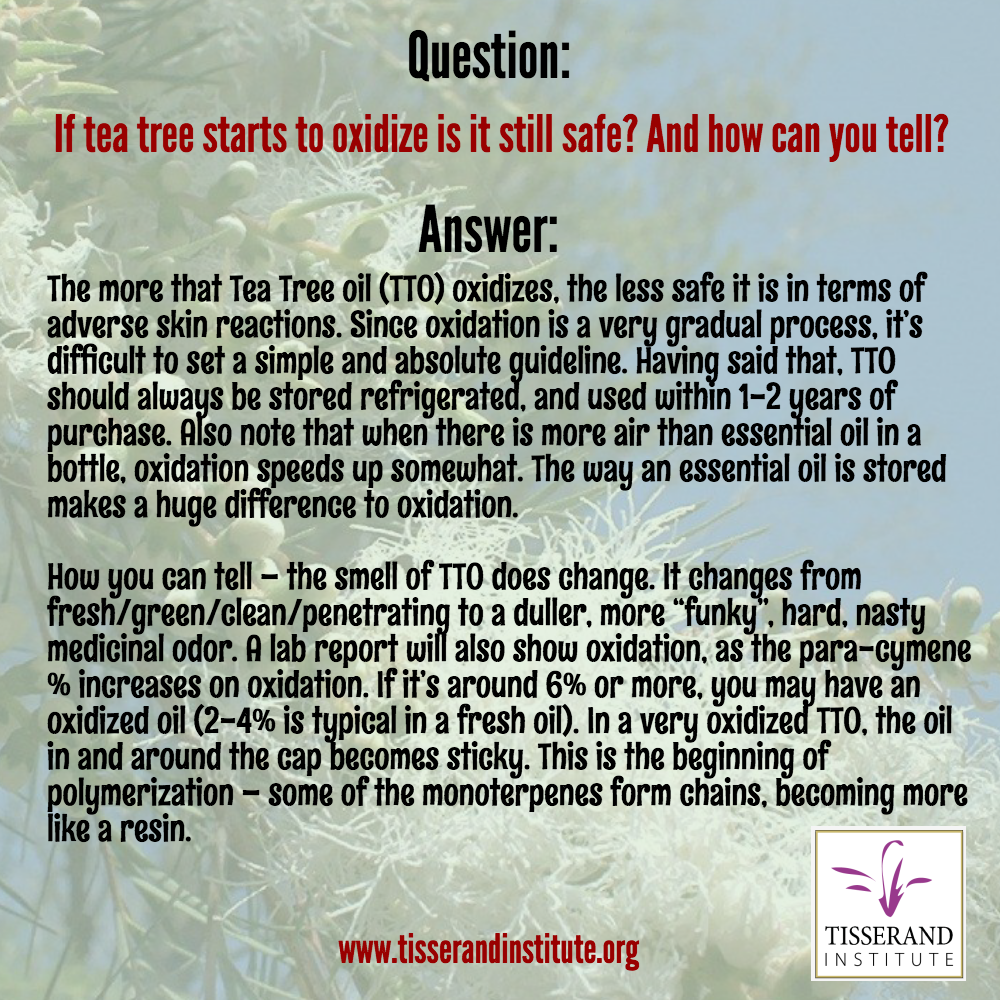Q&A Essential Oil Safety edition
Question (by Helen Bairstow): I’d like to know if tea tree starts to oxidize is it still safe? And how can you tell?
Answer: The more that Tea Tree oil (TTO) oxidizes, the less safe it is in terms of adverse skin reactions. Since oxidation is a very gradual process, it’s difficult to set a simple and absolute guideline. Having said that, TTO should always be stored refrigerated, and used within 1-2 years of purchase. Also note that when there is more air than essential oil in a bottle, oxidation speeds up somewhat. The way an essential oil is stored makes a huge difference to oxidation.
How you can tell – the smell of TTO does change. It changes from fresh/green/clean/penetrating to a duller, more “funky”, hard, nasty medicinal odor. Part of what you will smell in an oxidized oil is ascaridole, a powerful odorant that only forms on oxidation of the oil. A lab report will also show oxidation, as the para-cymene % increases on oxidation. If it’s around 6% or more, you may have an oxidized oil (2-4% is typical in a fresh oil).
In a very oxidized TTO, the oil in and around the cap becomes sticky. This is the beginning of polymerization – some of the monoterpenes form chains, becoming more like a resin. After a few decades, the oil becomes virtually solid, and smells really foul – something like gasoline or varnish, but worse.


I have read that the studies finding tea tree and lavender essential oils as endocrine disruptors has been challenged by tisserand — due to the plastic dishes used in the experiments. what proof do you have that the dishes were plastic. I have seen no confirmation from the original experiments as to what the dishes were made of. can you please indicate proof that these dishes were plastic and hence the outcome of the experiments showing that tea tree and lavender are estrogenic endocrine disruptors are not reliable. have you performed your own experiments that prove that tea tree and lavender are not estrogenic endocrine disruptors?
They used “99 well plates”, which you can Google – they are made of polystyrene, and this type of “well” is almost universally used in research. But this is stated in the papers.